-
 bitcoin
bitcoin $122288.232522 USD
0.16% -
 ethereum
ethereum $4480.662914 USD
-0.22% -
 xrp
xrp $2.962747 USD
-2.32% -
 tether
tether $1.000120 USD
-0.05% -
 bnb
bnb $1145.654223 USD
-2.07% -
 solana
solana $227.105217 USD
-1.67% -
 usd-coin
usd-coin $0.999548 USD
-0.02% -
 dogecoin
dogecoin $0.250875 USD
-2.04% -
 tron
tron $0.340654 USD
-0.49% -
 cardano
cardano $0.837968 USD
-2.52% -
 hyperliquid
hyperliquid $48.960449 USD
0.06% -
 chainlink
chainlink $22.049280 USD
-1.33% -
 ethena-usde
ethena-usde $1.000404 USD
0.02% -
 sui
sui $3.586212 USD
0.20% -
 avalanche
avalanche $29.894916 USD
-4.18%
What is a Bitcoin mempool?
The Bitcoin mempool temporarily holds unconfirmed transactions, with miners prioritizing those offering higher fees for faster confirmation.
Jul 07, 2025 at 06:08 am
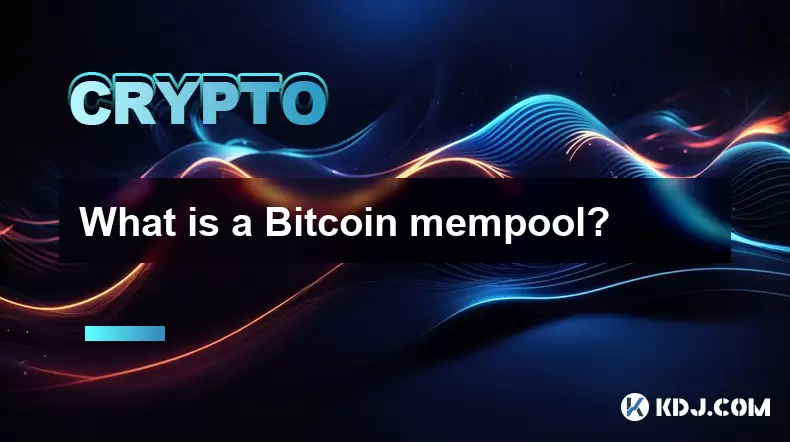
Understanding the Bitcoin Mempool
The Bitcoin mempool (short for memory pool) is a temporary storage area within each Bitcoin node that holds unconfirmed transactions. Before any transaction gets included in a block, it must first reside in the mempool of various nodes across the network. Each node maintains its own version of the mempool, which can differ slightly based on factors like network latency and transaction fees.
Transactions enter the mempool when they are broadcast to the network by users or wallets. Miners then select transactions from the mempool to include in the next block, typically prioritizing those with higher fees per byte.
How Does the Mempool Work?
When a user sends a Bitcoin transaction, it is propagated through the peer-to-peer network. Upon arrival at a node, the transaction undergoes validation checks. If valid but not yet confirmed, it is placed into the node’s mempool.
- Validation: The node verifies the digital signature, input ownership, and whether the transaction violates any consensus rules.
- Propagation: Once validated, the transaction is passed on to other connected nodes.
- Storage: Until mined, the transaction remains in the mempool.
Each node manages its mempool independently. Therefore, during periods of high network congestion, mempool sizes may vary significantly between nodes, depending on how quickly they receive and process new transactions.
Transaction Selection by Miners
Miners play a crucial role in determining which transactions get confirmed first. They typically choose transactions from their local mempool based on fee rates — measured in satoshis per byte.
- High Fee Transactions: These are usually selected first because they offer more reward to miners.
- Low Fee Transactions: May remain stuck in the mempool for hours or even days, especially if the network is busy.
Some mining pools use priority-based sorting algorithms to optimize block space usage. This means transactions with higher fee rates are grouped together to maximize miner revenue.
Additionally, Replace-by-Fee (RBF) allows senders to replace a pending transaction with another one that pays a higher fee, effectively expediting confirmation.
Mempool Size and Network Congestion
The size of the mempool fluctuates depending on the volume of transactions and block space availability. During times of heavy usage, such as during price surges or large NFT drops, the mempool can become overloaded.
- Mempool Spikes: When blocks are full, new transactions queue up in the mempool, increasing its size.
- Block Space Demand: Users compete for limited space by offering higher fees, creating a bidding war effect.
Monitoring tools like mempool.space or Blockchain.com Explorer provide real-time data on current mempool conditions, helping users estimate appropriate fees.
If the mempool becomes too large, some nodes may evict older or lower-fee transactions to free up memory. This eviction does not mean the transaction is invalid; it simply needs to be rebroadcast.
Transaction Expiry and Eviction Policies
Bitcoin does not have a hard time limit for transactions remaining in the mempool, but most nodes implement eviction policies after a certain period.
- Default Eviction Time: Most Bitcoin Core nodes will remove a transaction from the mempool if it has been there for more than 14 days.
- Minimum Fee Rate for Relaying: Nodes may also evict transactions that fall below the minimum relay fee rate.
These policies help prevent the mempool from becoming bloated with outdated transactions. However, users can rebroadcast their transactions to re-enter the mempool, potentially adjusting fees to increase priority.
It's important to note that not all nodes behave the same way — some custom implementations or lightweight clients may have different eviction thresholds.
Impact of Mempool on Transaction Confirmation Times
The state of the mempool directly affects how long it takes for a transaction to be confirmed.
- High Mempool Congestion: Leads to longer confirmation times unless users pay above-average fees.
- Low Mempool Usage: Allows low-fee transactions to be confirmed relatively quickly.
Wallets often integrate with fee estimation algorithms that analyze the current mempool to suggest optimal fees. These estimations help users avoid overpaying while still getting timely confirmations.
In some cases, child-pays-for-parent (CPFP) strategies are used to speed up confirmation. This involves attaching a high-fee child transaction to incentivize miners to include the parent transaction along with it.
Frequently Asked Questions
Q: Can I see what’s in the Bitcoin mempool?Yes, you can view real-time mempool data using platforms like mempool.space, Blockchain.com Explorer, or BitPay’s Insight Explorer. These tools show pending transactions, fee rates, and estimated confirmation times.
Q: Why is my transaction stuck in the mempool?Your transaction might be stuck due to a low fee rate, high network congestion, or being evicted by some nodes. You can attempt to speed it up using RBF or CPFP techniques.
Q: Do all Bitcoin nodes have the same mempool?No, each node maintains its own mempool. Differences can arise due to network propagation delays, varying eviction policies, and differences in fee estimation logic.
Q: How often does the mempool reset?The mempool doesn’t “reset” on a schedule. Transactions are removed either when they’re included in a block or when they expire due to age or insufficient fees.
Disclaimer:info@kdj.com
The information provided is not trading advice. kdj.com does not assume any responsibility for any investments made based on the information provided in this article. Cryptocurrencies are highly volatile and it is highly recommended that you invest with caution after thorough research!
If you believe that the content used on this website infringes your copyright, please contact us immediately (info@kdj.com) and we will delete it promptly.
- BlockDAG, DOGE, HYPE Sponsorship: Crypto Trends Shaping 2025
- 2025-10-01 00:25:13
- Deutsche Börse and Circle: A StableCoin Adoption Powerhouse in Europe
- 2025-10-01 00:25:13
- BlockDAG's Presale Buzz: Is It the Crypto to Watch in October 2025?
- 2025-10-01 00:30:13
- Bitcoin, Crypto, and IQ: When Genius Meets Digital Gold?
- 2025-10-01 00:30:13
- Stablecoins, American Innovation, and Wallet Tokens: The Next Frontier
- 2025-10-01 00:35:12
- NBU, Coins, and Crypto in Ukraine: A New Yorker's Take
- 2025-10-01 00:45:14
Related knowledge
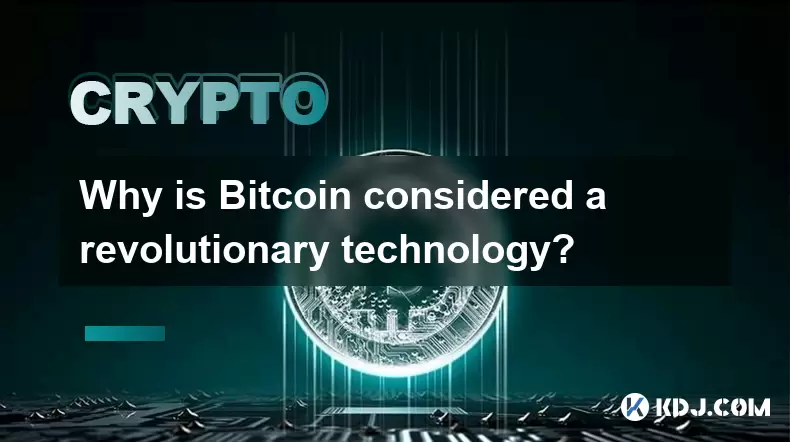
Why is Bitcoin considered a revolutionary technology?
Aug 12,2025 at 08:29pm
Decentralization and the Elimination of Central AuthoritiesThe core innovation behind Bitcoin lies in its decentralized architecture, which fundamenta...
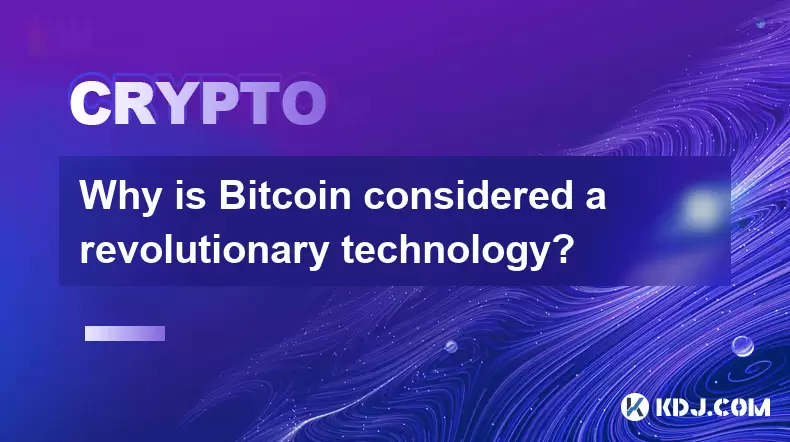
Why is Bitcoin considered a revolutionary technology?
Aug 10,2025 at 07:42pm
Decentralized Architecture and Trustless TransactionsBitcoin is considered revolutionary because it introduced a decentralized architecture that opera...
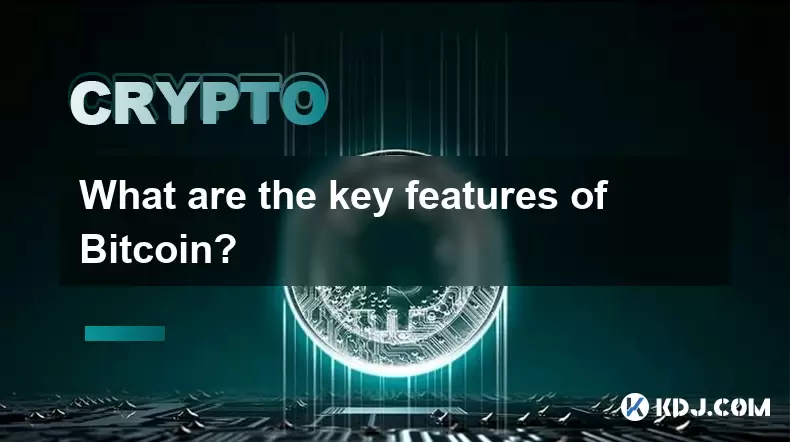
What are the key features of Bitcoin?
Aug 10,2025 at 02:50am
Decentralization and Peer-to-Peer NetworkOne of the most defining characteristics of Bitcoin is its decentralized nature. Unlike traditional financial...
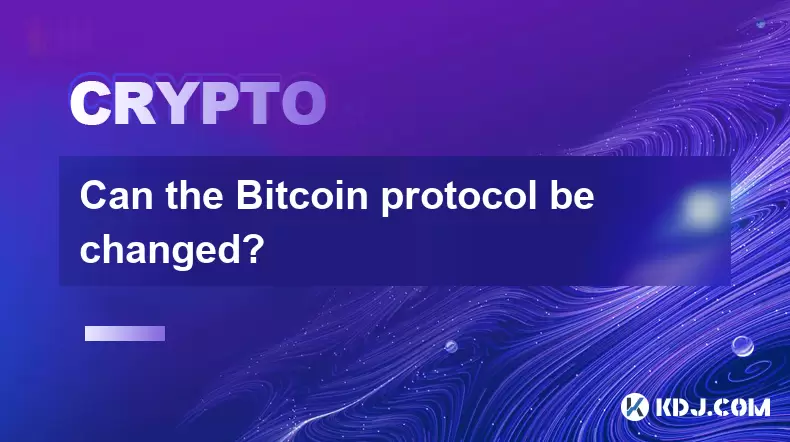
Can the Bitcoin protocol be changed?
Aug 07,2025 at 01:16pm
Understanding the Bitcoin ProtocolThe Bitcoin protocol is the foundational set of rules that govern how the Bitcoin network operates. It defines every...
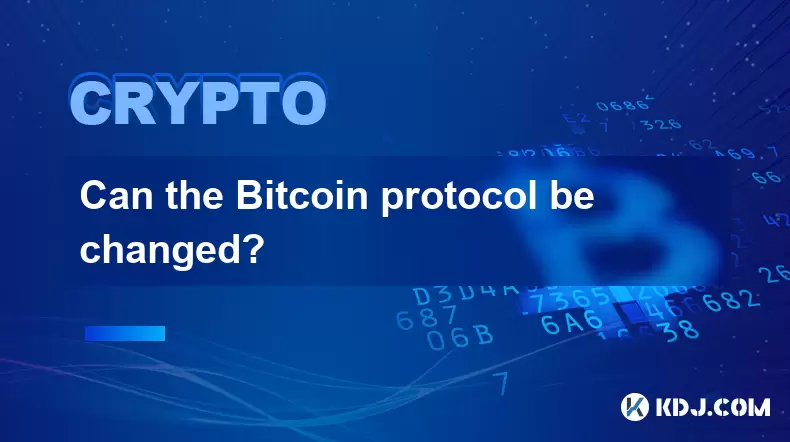
Can the Bitcoin protocol be changed?
Aug 11,2025 at 01:01am
Understanding the Bitcoin Protocol StructureThe Bitcoin protocol is the foundational set of rules that govern how the Bitcoin network operates. These ...

What happens to Bitcoin transactions once they are confirmed?
Aug 09,2025 at 05:22am
Understanding Bitcoin Transaction ConfirmationWhen a Bitcoin transaction is initiated, it is broadcast to the network and placed in a pool of unconfir...

Why is Bitcoin considered a revolutionary technology?
Aug 12,2025 at 08:29pm
Decentralization and the Elimination of Central AuthoritiesThe core innovation behind Bitcoin lies in its decentralized architecture, which fundamenta...

Why is Bitcoin considered a revolutionary technology?
Aug 10,2025 at 07:42pm
Decentralized Architecture and Trustless TransactionsBitcoin is considered revolutionary because it introduced a decentralized architecture that opera...

What are the key features of Bitcoin?
Aug 10,2025 at 02:50am
Decentralization and Peer-to-Peer NetworkOne of the most defining characteristics of Bitcoin is its decentralized nature. Unlike traditional financial...

Can the Bitcoin protocol be changed?
Aug 07,2025 at 01:16pm
Understanding the Bitcoin ProtocolThe Bitcoin protocol is the foundational set of rules that govern how the Bitcoin network operates. It defines every...

Can the Bitcoin protocol be changed?
Aug 11,2025 at 01:01am
Understanding the Bitcoin Protocol StructureThe Bitcoin protocol is the foundational set of rules that govern how the Bitcoin network operates. These ...

What happens to Bitcoin transactions once they are confirmed?
Aug 09,2025 at 05:22am
Understanding Bitcoin Transaction ConfirmationWhen a Bitcoin transaction is initiated, it is broadcast to the network and placed in a pool of unconfir...
See all articles










































































